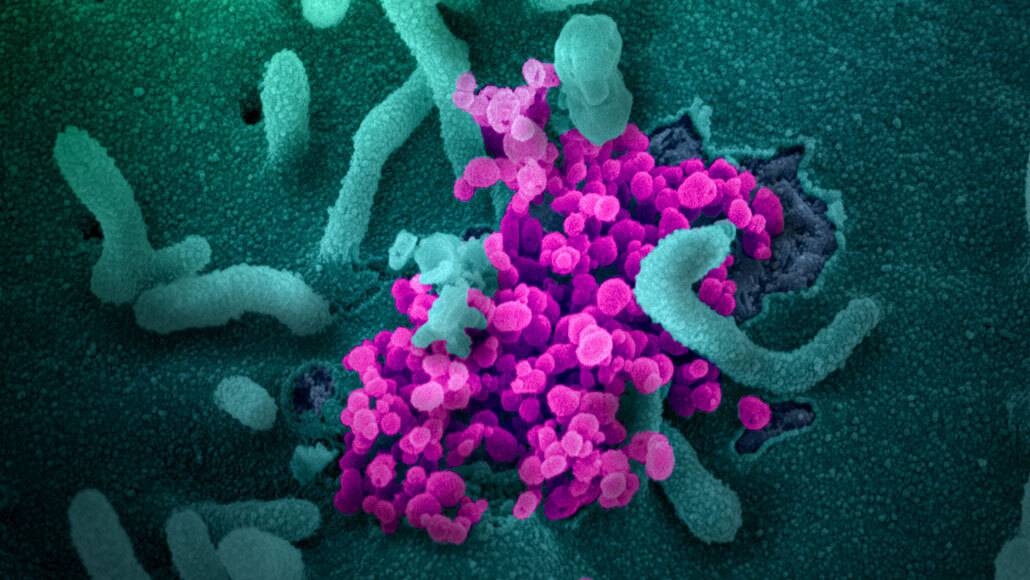Loss of smell and taste may actually be one of the clearest signs of COVID-19
Data from a smartphone app for symptoms shows two-thirds of positive patients lose the senses

Coronavirus (seen emerging from an infected cell in this colored electron micrograph) may interfere with some nerve cells’ ability to detect odors. The loss of smell and taste stemming from that interference may be a telltale sign of infection, a new study suggests.
NIAID








